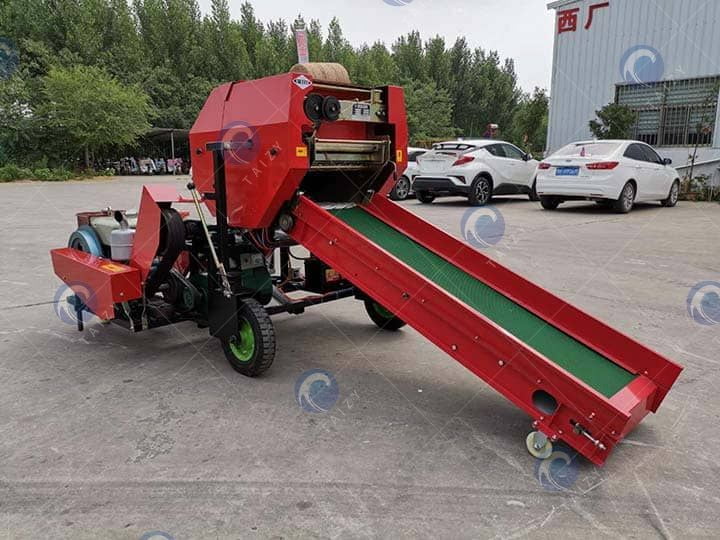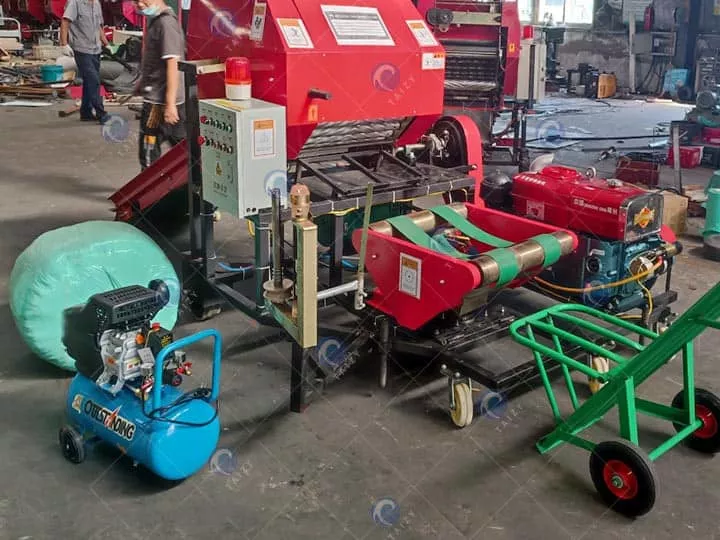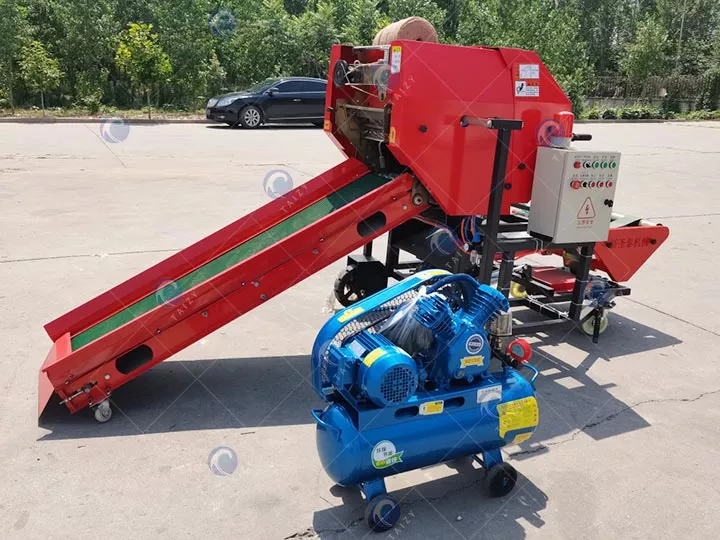Khám phá sự khác biệt giữa máy đóng kiện ủ chua hoàn toàn tự động và bán tự động
Trong lĩnh vực chế biến silage, lựa chọn giữa máy cuộn silage tự động toàn phần và bán tự động có thể ảnh hưởng lớn đến hiệu quả và sự tiện lợi.
Hiểu được sự khác biệt giữa hai loại máy này là rất quan trọng đối với những người nông dân đang tìm cách tối ưu hóa hoạt động đóng kiện thức ăn ủ chua của mình.

Cơ chế điều khiển: Máy nén khí và vận hành bằng tay
Sự khác biệt nổi bật nhất giữa máy đóng kiện ủ chua hoàn toàn tự động và máy đóng kiện bán tự động nằm ở cơ chế điều khiển của chúng, đặc biệt liên quan đến việc mở cửa xả.
Đặc điểm nổi bật của biến thể hoàn toàn tự động là sự tích hợp của máy nén khí, giúp điều chỉnh hiệu quả việc mở cửa xả. Ngược lại, đối tác bán tự động dựa vào sự can thiệp thủ công.
Khi sử dụng máy đóng kiện ủ chua bán tự động, người vận hành phải mở cửa xả theo cách thủ công, thường được hỗ trợ bằng một tay cầm nằm cạnh ổ cắm. Sự khác biệt cơ bản trong cơ chế kiểm soát này có ý nghĩa đáng chú ý đối với hiệu quả hoạt động và yêu cầu lao động.
Hiệu quả và tiện lợi: Tiết kiệm thời gian và năng lượng
Việc triển khai máy nén khí trong máy đóng kiện ủ chua hoàn toàn tự động mang lại những lợi thế đáng kể về hiệu quả và sự tiện lợi. Với lực do máy nén khí tạo ra, cửa xả của máy hoàn toàn tự động có thể được mở tự động, loại bỏ sự can thiệp thủ công.

Việc tự động hóa này không chỉ hợp lý hóa quy trình đóng kiện mà còn góp phần tiết kiệm đáng kể thời gian và năng lượng cho người vận hành. Ngược lại, máy đóng kiện ủ chua bán tự động đòi hỏi nỗ lực thủ công để vận hành cửa xả, việc này có thể tốn nhiều công sức và thời gian, đặc biệt là trong các hoạt động đóng kiện ủ chua quy mô lớn.
Chất lượng của gói ủ chua
Bất chấp sự khác biệt về cơ chế điều khiển và quy trình vận hành, cả máy đóng kiện ủ chua hoàn toàn tự động và bán tự động đều cung cấp các bó thức ăn ủ chua chất lượng cao phù hợp cho việc lưu trữ lâu dài.
Bất kể loại máy nào được chọn, nông dân đều có thể mong đợi kết quả ổn định và đáng tin cậy về chất lượng thức ăn ủ chua. Tính đồng nhất này nhấn mạnh tính hiệu quả của cả hai biến thể trong việc bảo quản cây thức ăn gia súc và đảm bảo tuổi thọ của chúng, từ đó hỗ trợ các nỗ lực bền vững trong chăn nuôi và chăn nuôi.
Phần kết luận

Tóm lại, việc lựa chọn giữa máy đóng kiện ủ chua hoàn toàn tự động và bán tự động phụ thuộc vào nhiều yếu tố khác nhau, bao gồm ưu tiên vận hành, cân nhắc về lao động và hạn chế về ngân sách.
Mặc dù tùy chọn hoàn toàn tự động mang lại sự tiện lợi và hiệu quả vượt trội thông qua cơ chế điều khiển tự động, nhưng biến thể bán tự động vẫn là lựa chọn khả thi cho những người nông dân đang tìm kiếm giải pháp tiết kiệm hơn.
Cuối cùng, cả hai loại máy đều phục vụ mục tiêu chung là sản xuất các bó thức ăn ủ chua chất lượng cao, tạo điều kiện bảo quản thức ăn thô xanh hiệu quả và góp phần vào năng suất chung và tính bền vững của các hoạt động nông nghiệp.